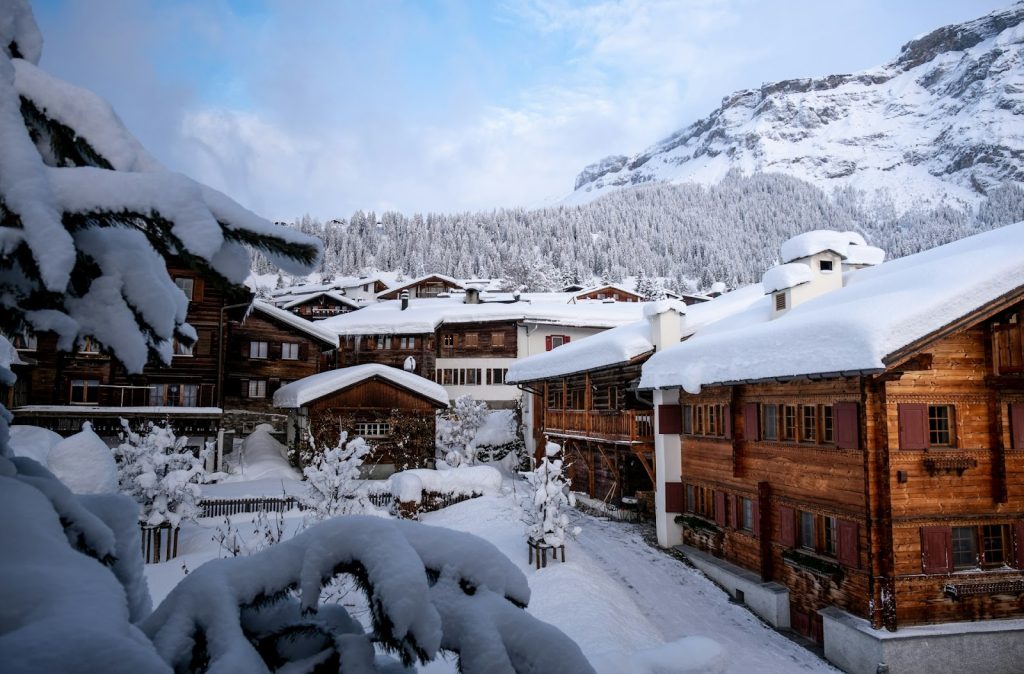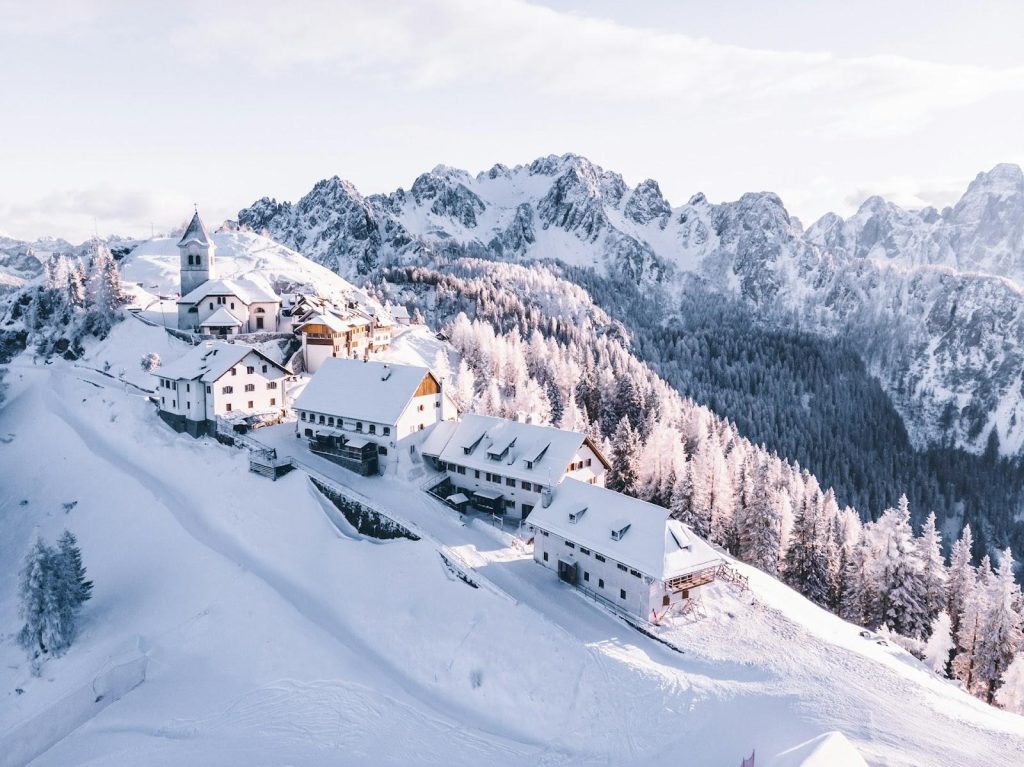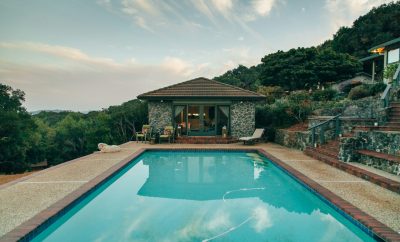Is a Ski Chalet a Good Investment?
Investing in a ski chalet is an option considered by many property investors. Owning a ski property in the snow-covered mountains often makes the prospect seem irresistible.

Apart from being a personal getaway, ski chalets can also be a potential source of rental income. They can turn into a great financial investment, especially in areas with a consistent demand from tourists and a thriving winter sports culture.
However, before investing money, you should examine whether a ski chalet is a worthwhile investment in your specific case. Also, you need to assess several factors in order to determine what chalet to invest in.
Needless to say, the location of the property is crucial. Additionally, the potential for year-round rental income should be considered, as some ski resorts offer activities beyond the winter months and thus improve the chalet’s rental appeal.
Keep reading because this guide will help you find out whether you should invest in a ski chalet and what exact factors you need to consider if you decide to do it.
Why Are Ski Chalets So Appealing?
The return on investment in ski chalets depends on their aesthetics and access to prime locations.
Aesthetic and lifestyle attraction
Ski chalets are renowned for their distinctive architectural charm and the fact that they’re associated with the mountain lifestyle. These properties offer a perfect mix of rustic ambience with modern luxuries, making them highly desirable to those seeking a getaway retreat from city life.
The design of ski chalets often includes natural materials like wood and stone, which complement the alpine scenery. This creates an inviting ambience that is hard to replicate in other types of luxury properties.
Popular destinations
Ski resorts are frequently situated in areas that offer stunning natural beauty and a range of outdoor activities, which results in a high demand for nearby accommodations. The best ski chalets are strategically located to provide convenient access to the slopes, which significantly enhances their appeal.
Many high-altitude resorts also offer year-round attractions, such as hiking, biking, and festivals, which sustain visitor interest outside the winter season. The popularity of these destinations contributes to the sustained value and potential for investment returns on ski chalets.
Market Trends

Considering the current market conditions, historical appreciation, and tourism, the ski chalet investment market is dynamic, to say the least.
Current market conditions
The current market has seen a 4.4% increase in the price of luxury ski chalets in the year leading up to June 2023. This rate of growth is significant and it signals a period of growth for ski chalet investments post-pandemic.
Buyers and investors are observing that property prices in ski locales are subject to fluctuations based on several factors including location, amenities, and access to ski resorts.
Historical appreciation
Over the past three decades, ski properties, especially in Alpine locations, have consistently shown capital gains. As we mentioned, a ski chalet is not just a property investment but a potential income source and a personal retreat, which considerably enhances its appreciation value.
Tourism and market impact
The influx of tourists to ski destinations has a direct correlation with the performance of rental properties in those areas. Ski chalets that can be rented out may become particularly profitable during the high season when demand surges.
Additionally, governmental investment in tourism infrastructure, such as seen in Slovenia, can signal potential market growth and boost in property values. This makes ski chalet investment a more attractive proposition for investors looking for both short-term rental yields and long-term asset appreciation.
Financial Considerations
When evaluating a ski chalet as an investment, it’s crucial to examine the financial aspects closely. The purchase price, potential to generate income through rental opportunities, and ongoing costs including maintenance and property taxes play a key role in determining the viability of the investment.
Cost of investment
The purchase price of a ski chalet can vary widely based on location, size, and amenities. For a chalet that is well-situated in a desirable ski resort and equipped with state-of-the-art technology, the investment can run into the millions, which calls for comprehensive market research before making a decision.
Rental income projections
A ski chalet has the potential to generate income through year-round rental opportunities. Rental income projections should factor in peak ski seasons where demand is highest, as well as off-season periods where income might be lower.
Moreover, chalets that offer modern amenities, proximity to ski lifts, or unique experiences may command higher rental rates.
Ongoing expenses
Finally, potential buyers should account for ongoing expenses such as maintenance costs, which ensure the property remains appealing and safe for guests. Maintenance costs can include snow removal, cleaning services, and repairs, which are necessary to maintain the value and rental appeal of the property.
Property taxes also play a significant role in the annual expenditures. Of course, if managed well, these costs can be offset by the income generated from renting out the chalet.
Location, Location, Location

When it comes to investing in ski chalets, the choice of location is fundamental. It dictates not only the property’s desirability but also its potential for return on investment (ROI) and long-term appreciation.
A chalet in a well-known ski resort with a good track record of tourism and property appreciation is typically a sound choice.
Impact on investment potential
Three Valleys and Portes du Soleil are prime examples of locations with high investment potential. There is also the Four Valleys area in Switzerland, with Verbier as the top location for investing in a ski chalet.
Properties in these areas benefit from extensive ski networks and high tourist demand, which can significantly drive up both rental income and resale value. Careful analysis of a chalet’s proximity to the town/village center and essential amenities can also influence its attractiveness to both renters and buyers.
What are some things to consider when it comes to location?
Before investing, look beyond the general appeal of the resort.
If you want to ensure that the selected location meets your investment expectations, considering these factors is vital:
- Accessibility: Is the chalet easily reachable via major roads or public transportation?
- Amenities: Are there shops, restaurants, and recreational facilities within a short distance?
- Development plans: Are there upcoming projects that could enhance the area’s value or appeal?
- Seasonal appeal: Does the location offer year-round attractions, not just winter sports?
Rental demand and profitability
The ski chalet market is subject to variable rental demand throughout the year. Profitability largely hinges on peak season performance and strategic management to maximize rental income.
Trends in rental demand
As expected, rental demand for ski chalets primarily peaks during the winter months when the ski season is in full swing. Peak season sees a surge in tourists seeking accommodation close to slopes, contributing to higher rental yields.
Historically, chalets in desirable, well-accessed locations such as the Swiss Alps have maintained robust demand. Moreover, properties offering unique amenities tend to outperform in the rental market.
How to maximize rental income?
To maximize rental income, property owners must focus on key factors that drive profitability. These include offering competitive rates, keeping the property well-maintained, and updating amenities to meet the expectations of potential renters.
Employing dynamic pricing strategies during peak season and off-season periods can help in optimizing rental returns. Owners can also explore multiple renting channels to increase visibility and bookings.
You can utilize various platforms to reach more people, use dynamic pricing to adjust rates based on seasonality, and boost customer experience by delivering quality service to encourage repeat business.
Risks and Challenges
From market volatility to regulatory frameworks, investing in ski chalets brings a unique profile of complexities and challenges. We encourage investors to navigate these aspects with a strategic and informed approach, as well as with careful consideration of the risks involved.
Investment risks
- The market for ski chalets can be turbulent, with investment risks increased due to the seasonal nature of ski tourism. Investors must acknowledge that rental income may peak during the winter ski season, but often diminish considerably in the summer months.
- The real estate market also fluctuates, impacting chalet valuations and the return on investment.
- Finally, there’s the added risk of new developments impacting existing properties’ competitiveness and desirability.
Legal and regulatory considerations
When it comes to legal and regulatory considerations, investors should be aware of local zoning laws, land use regulations, and taxation policies. It’s essential to understand the legal framework surrounding property ownership, which varies significantly by country and region.
Each jurisdiction may have different rules on foreign property ownership, rental licenses, and tax structures that can affect the profitability and legality of the investment.
Environmental impacts
- Lastly, the environmental impacts are an important aspect to keep in mind. Changes in climate can alter snowfall patterns and ski season lengths, thus affecting chalet occupancy rates and investment returns.
- Furthermore, the construction and operation of chalets have implications for local ecosystems, and there’s a push for sustainable and eco-friendly practices across the industry. Consider environmental sustainability not only as a responsibility but also as a factor that increasingly influences consumer choices and market trends.
Long-term Investment Strategy

Examining the longevity and sustainability of the property in the market includes gauging rental potential and capital appreciation over time, as well as evaluating the responsibilities that come with such an investment.
Planning for the long haul
Investing in a ski chalet can be lucrative if treated as a long-term asset. Investors should recognize that the market for ski chalets often fluctuates with seasons and therefore, it’s essential to strategize for a year-round destination to maximize rental income. This could mean seeking out properties in areas that offer summer tourism and attractions, such as hiking or mountain biking.
Importance of upkeep
Regular property management is essential for maintaining the value of the ski chalet. The cost of upkeep and renovations should be factored into the long-term budget since properties that are well-cared-for tend to retain or increase their value over time.
Moreover, well-maintained chalets often have higher rental appeal, which is critical for ensuring a steady income stream. Our experts will be happy to help you if you have any questions or ideas for renovating your chalet in Verbier.
Personal use vs. investment
As an investor, you must decide how often you plan to stay in the chalet compared to renting it out. Personal enjoyment is a valid reason to invest, but you should consider that extensive personal use might limit rental opportunities.
On the flip side, exclusively managing the chalet as a rental property could lead to more significant financial gains, considering the demand for high-quality accommodations in popular ski regions.
Final Thoughts
As you can see, the answer is not a simple yes or no. Investing in a ski chalet can definitely be a strategic addition to a diverse investment portfolio.
Similar to most real estate investments, chalets have the potential to generate rental income and possibly appreciate in value over time. However, it is crucial to consider various important factors before making a commitment, such as location, maintenance costs, and market trends.
In addition, the decision to invest in a ski chalet should be based on a careful evaluation of personal financial circumstances and investment goals. It’s best to conduct due diligence and consult with real estate professionals with expertise in the specific ski market of interest.
A ski chalet can offer the joy of personal use and the possibility of becoming a retirement home. On the other hand, financial prudence and strategic thinking are critical to ensuring that the investment aligns with one’s expectations and investment criteria.
If you think investing in a ski chalet is the right decision for you, we recommend taking a look at Verbier chalets for sale. A ski chalet in such a beautiful and popular location can be one of the best investments you will ever make.




